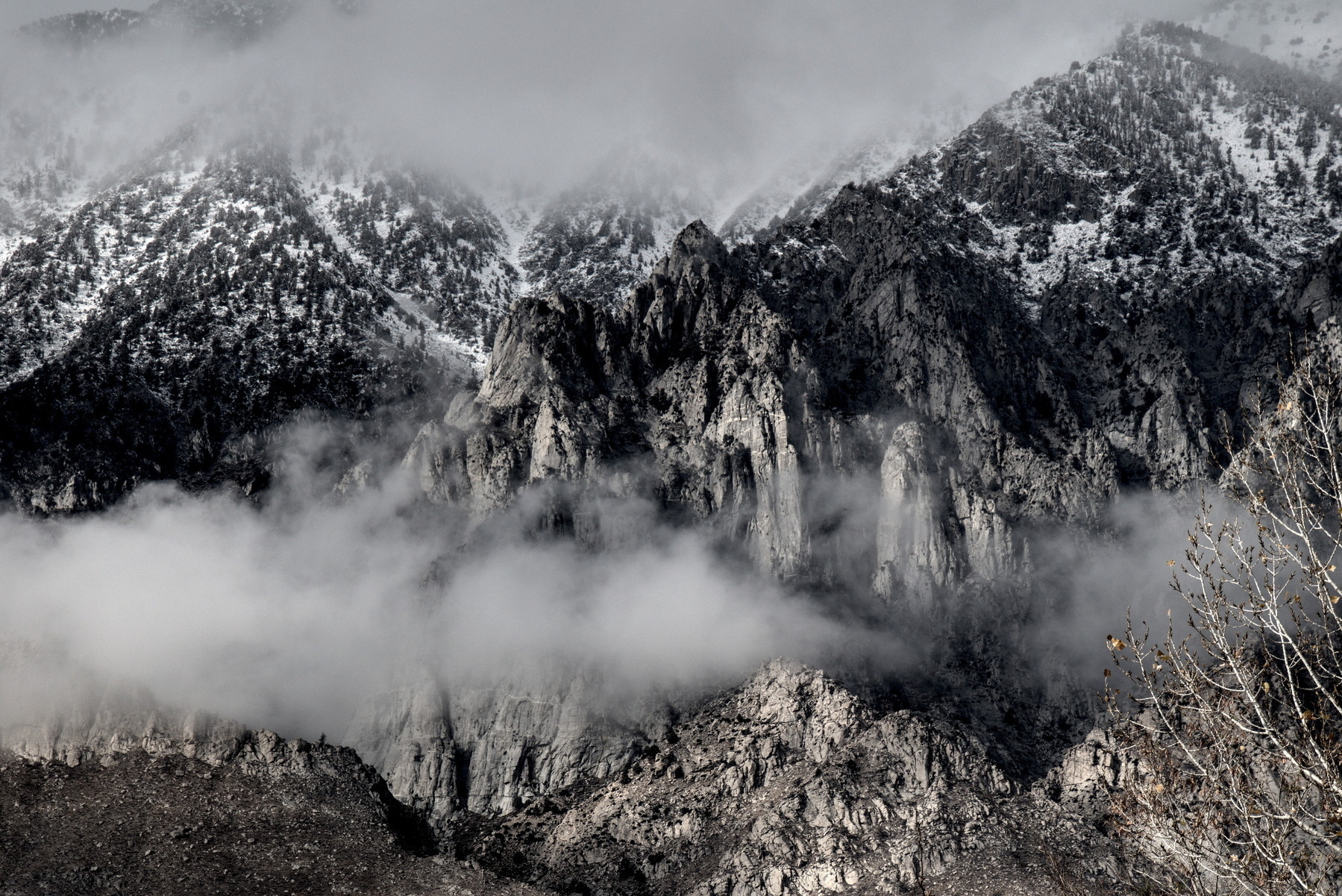Granite spires, Wheeler Crest.
Wheeler Crest is a wall of granite, roughy 8 miles long, rising from 5000’ to 12,500’ in less than two miles horizontally.
A couple who live in my neihgborhood are professional climbers. After they moved here, they got hold of a climbing guidebook from the 1950s, when Wheeler Crest was a popular destination. Their tale of climbing those spires made it clear to me why climbers might prefer other destinations these days.
They started out before dawn, hiking several miles to the base of the cliff, then climbed some hard-scrabble alluvial mounds, which got them to the base of the spires they wanted to scale. The spires are pink granite, rising over 700’ on their face. Once at the top of the spires, which is still far below the top of the ridge, they followed the instructions in the guidebook, traversing over to the next channel down the face. Unfortunately, when they got there, they saw no way down, and at that point they had no reliable navigation. They chose to keep traversing and the third channel proved to be navigable. After a nervy descent and another hike, they arrived home well after dark.
Bishop is still a home for climbers, but the focus has shifted to bouldering. Much of the rock around here is volcanic, with big air bubbles embedded, which make for great handholds. I suspect climbers capable of the kind of adventure my neighbors had now go around the world to special locations. Boulderers seem to be looking for climbing they can do repeatedly, conveniently, without mounting an expodition.
My neighbors were no spring chickens when they did this climb, in their early 60s, I think. I asked them how they stayed so fit, and the answer was simple: they never stopped moving.
And so Wheeler Crest seems mostly untravelled these days, which I don’t mind at all.
